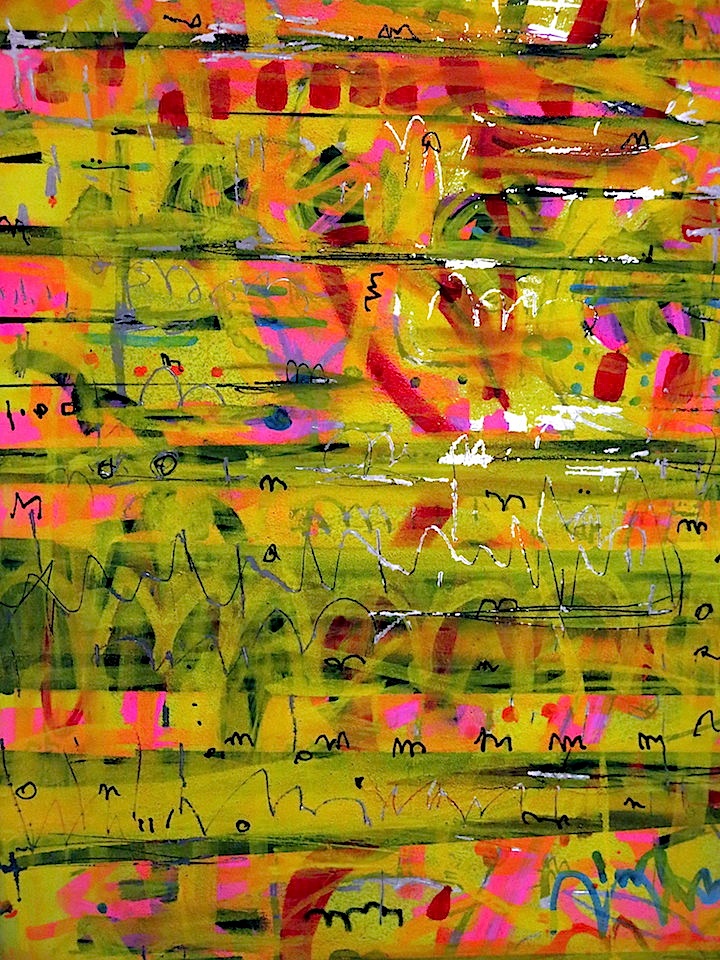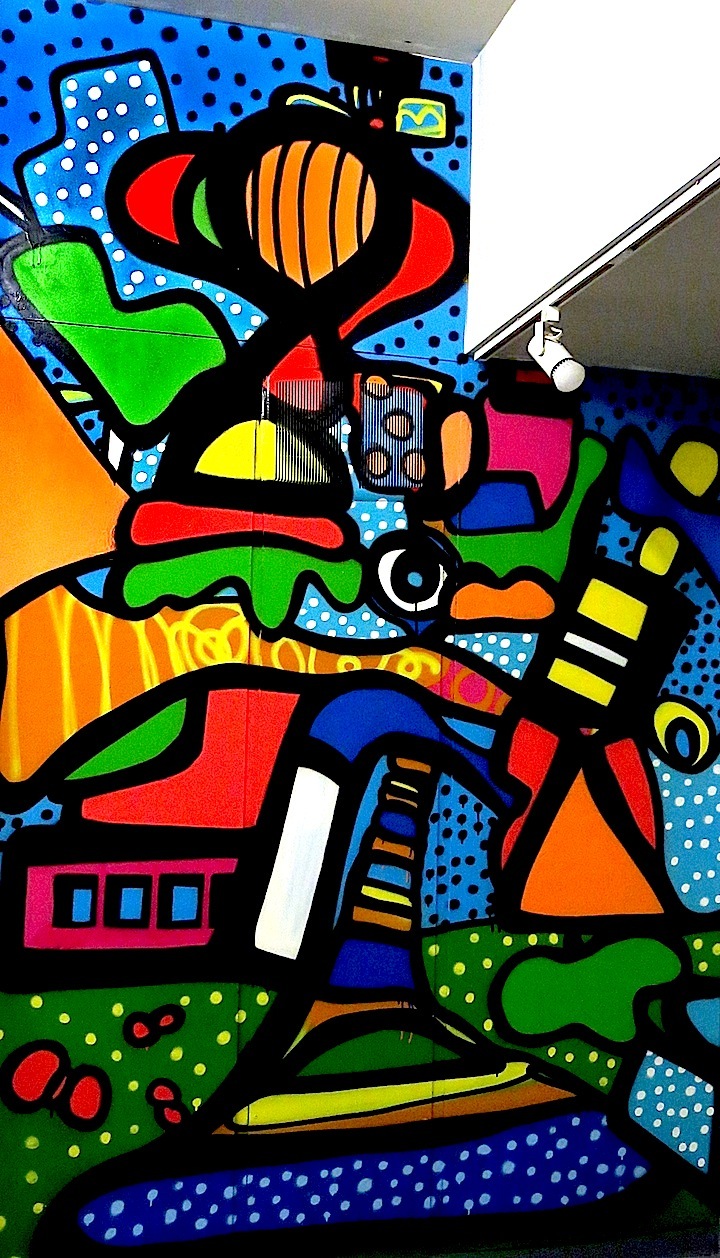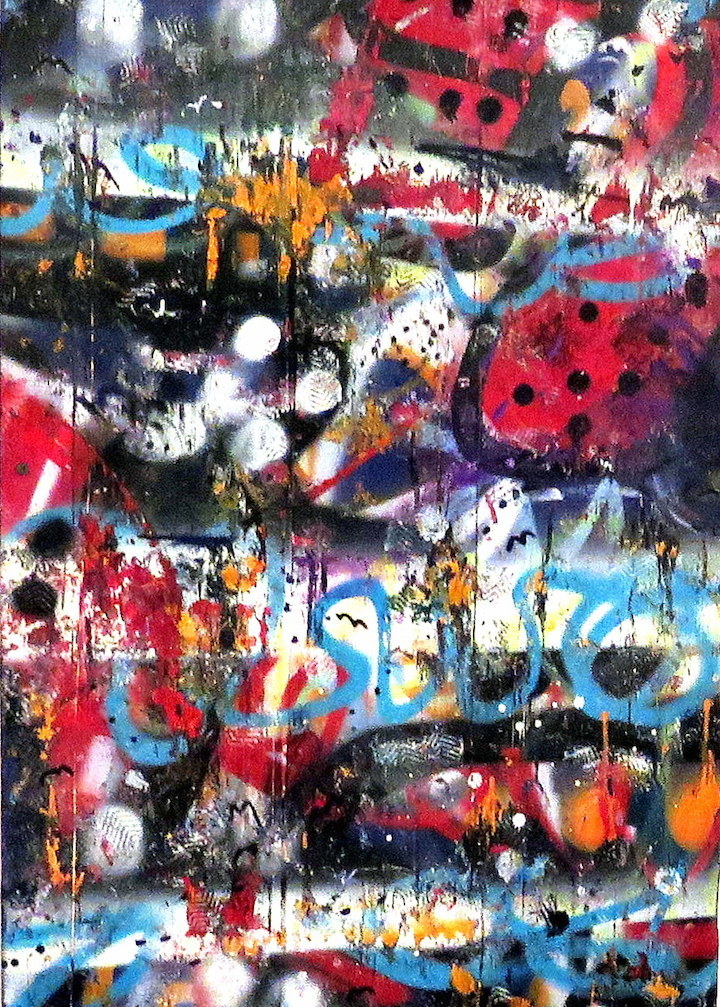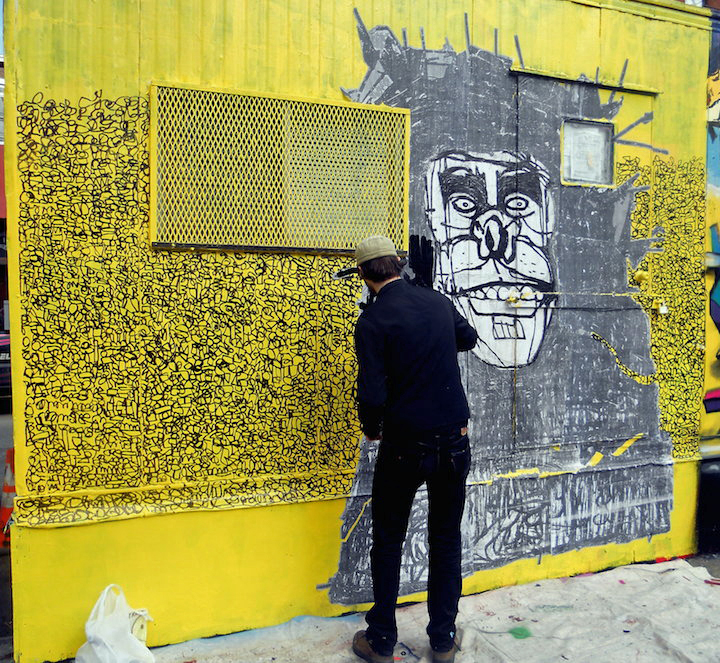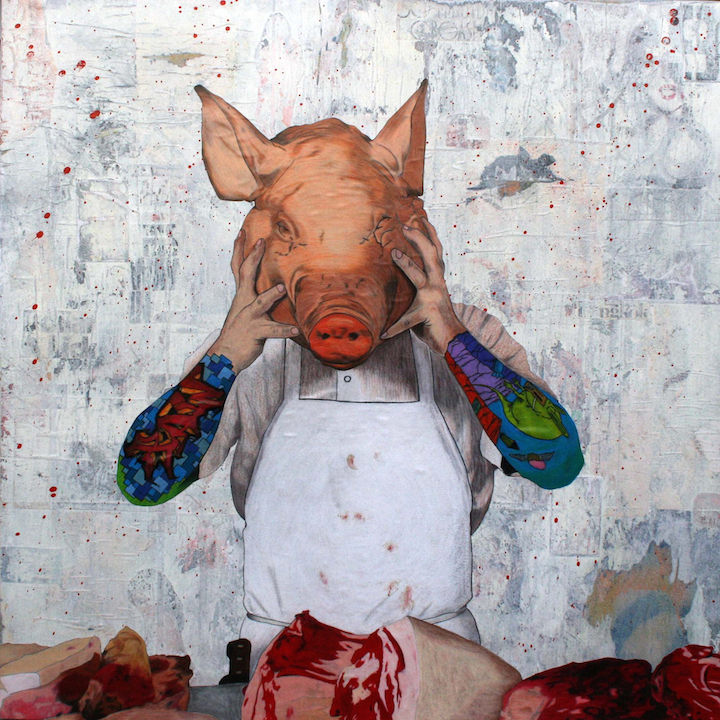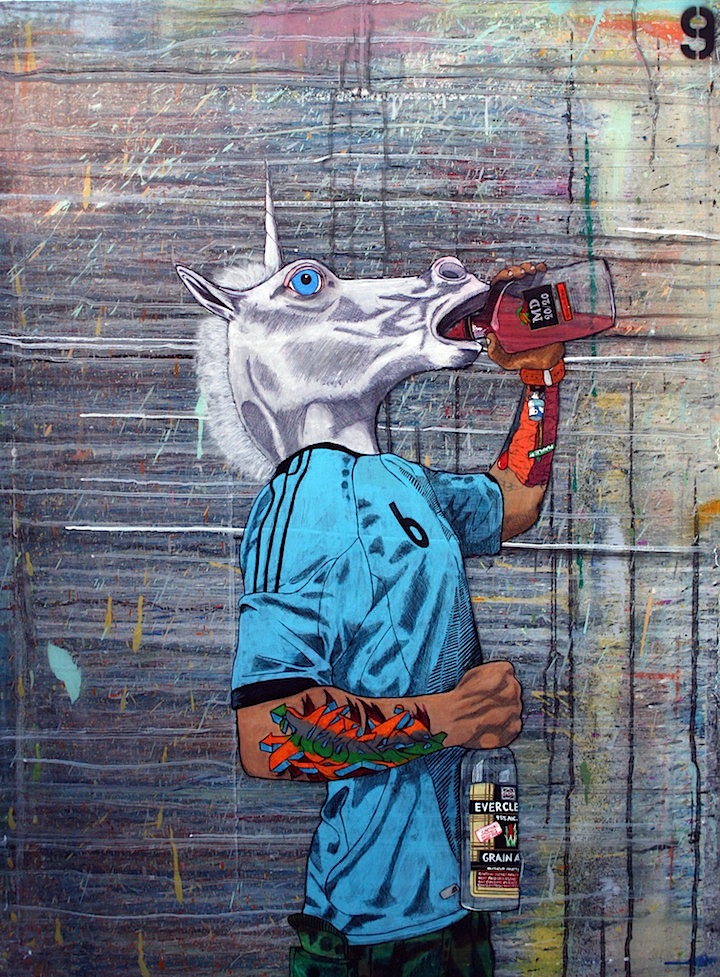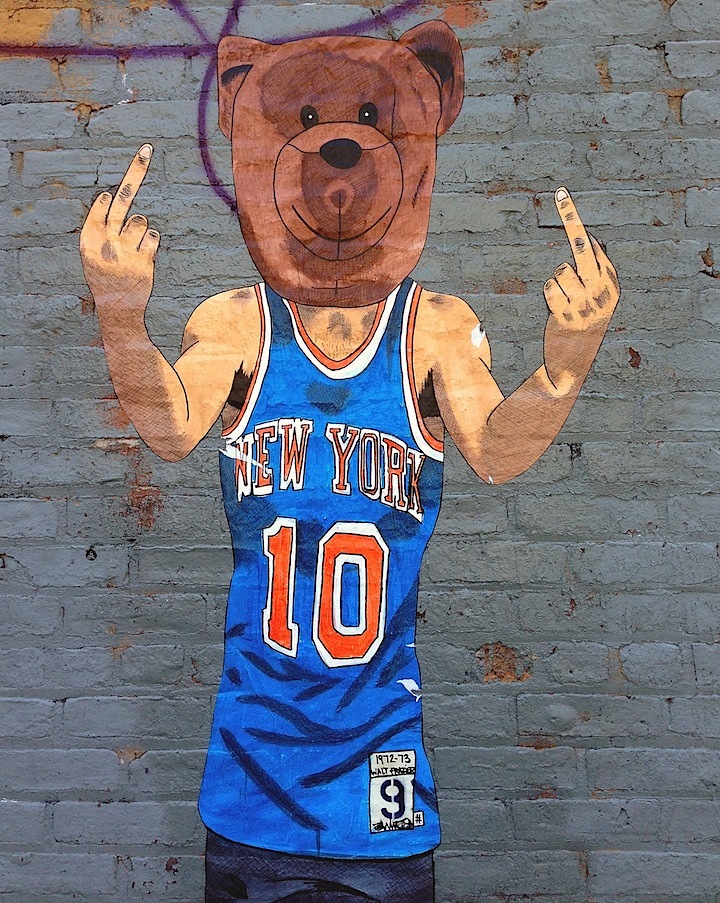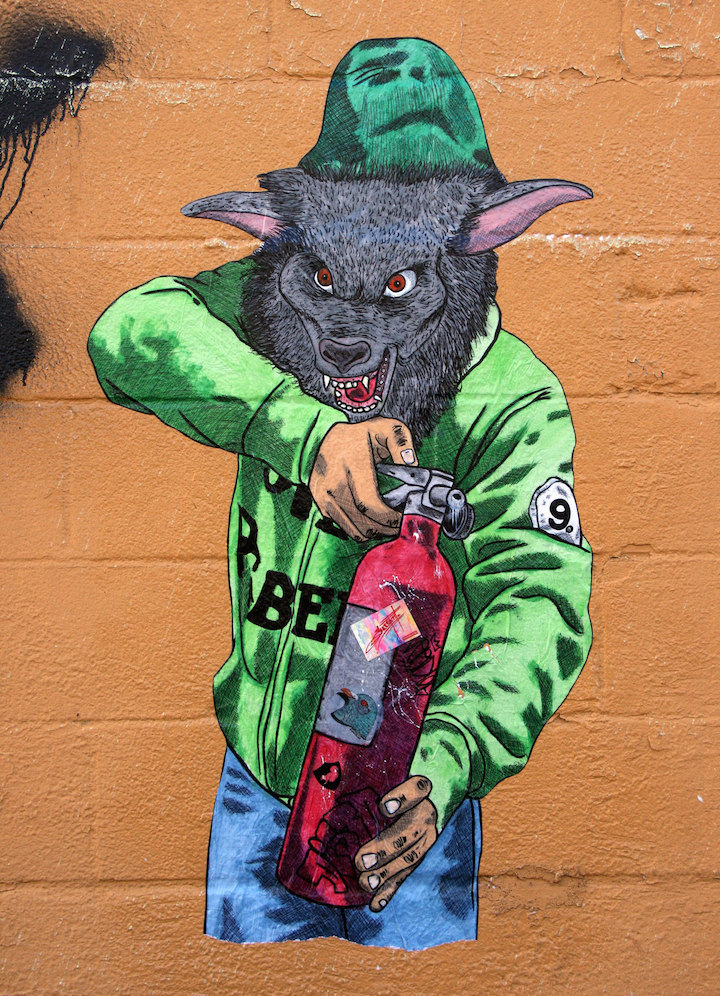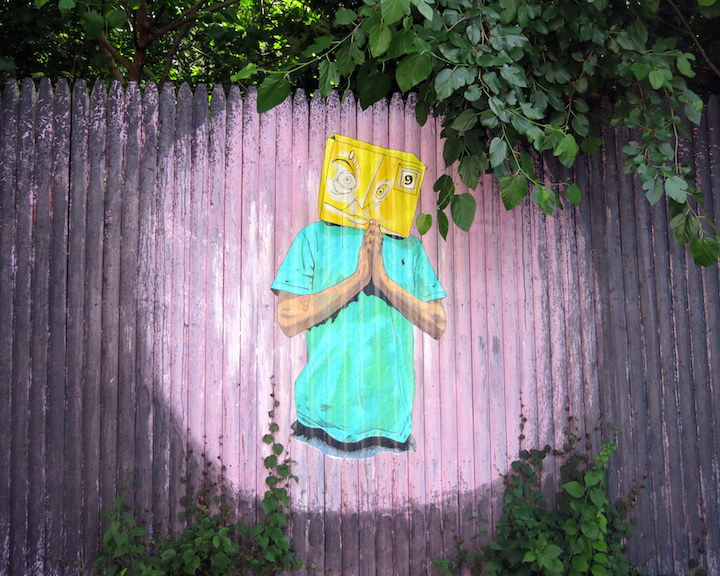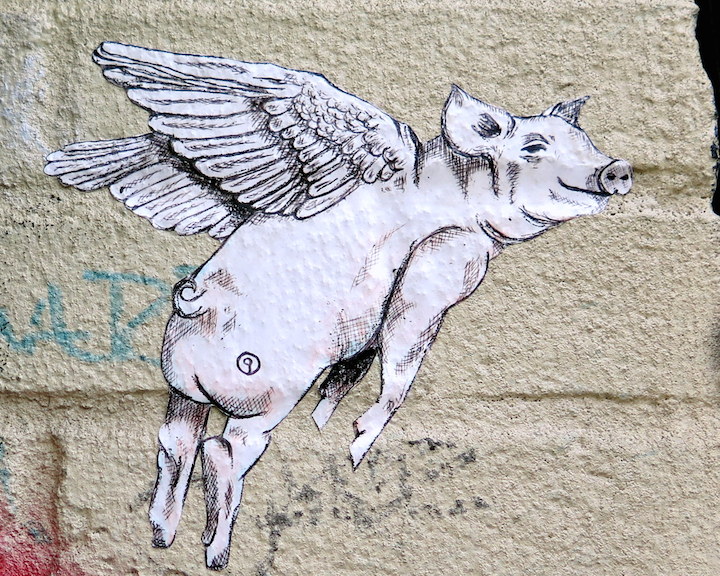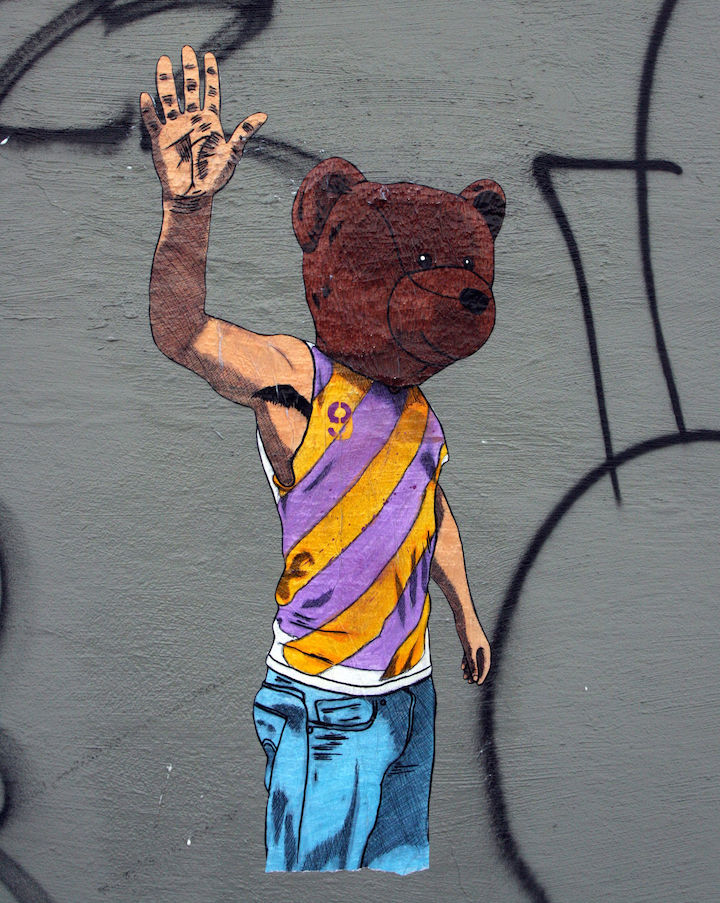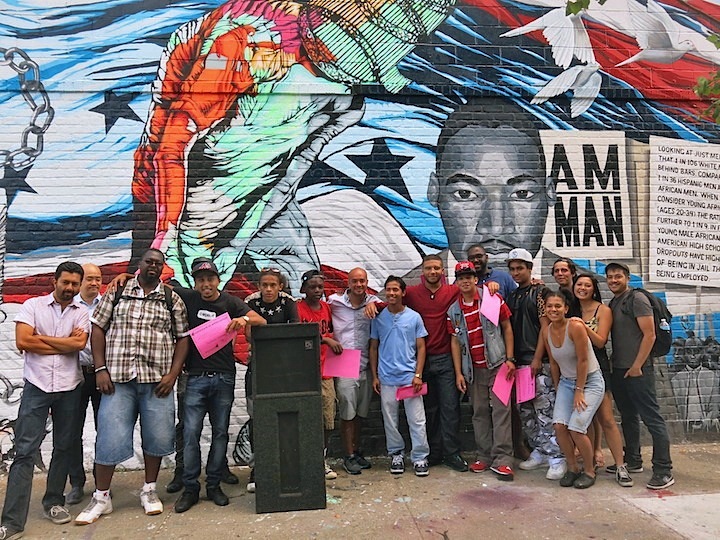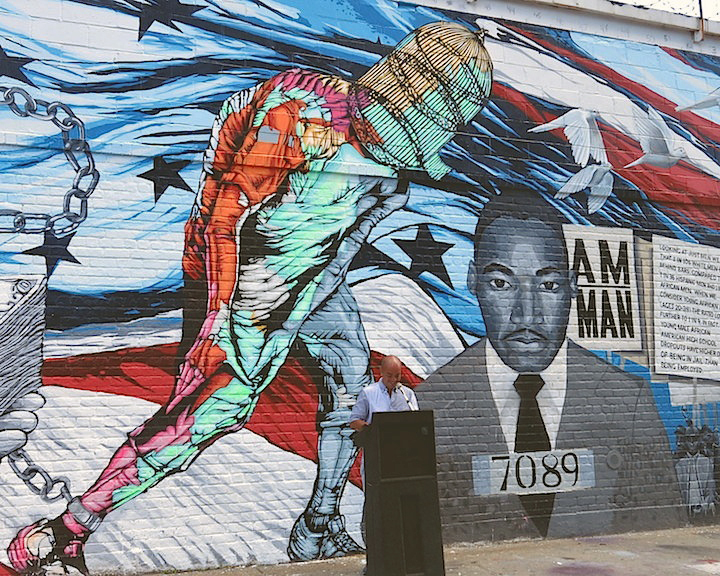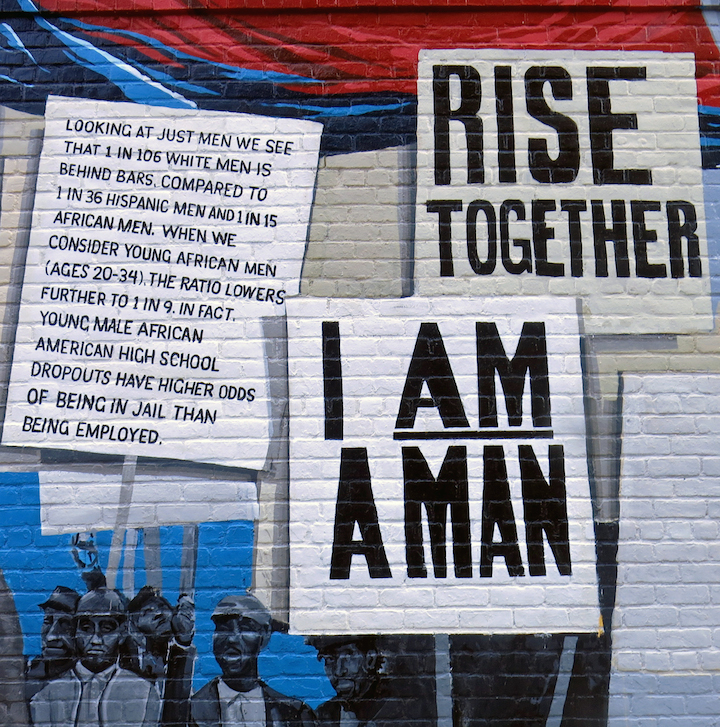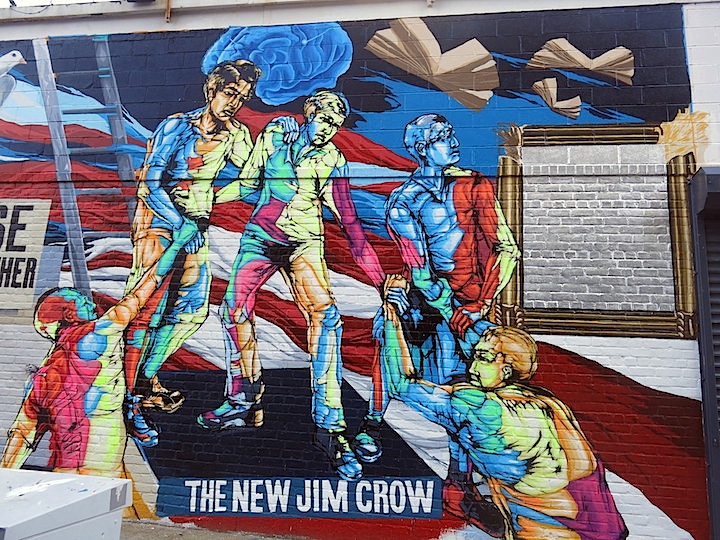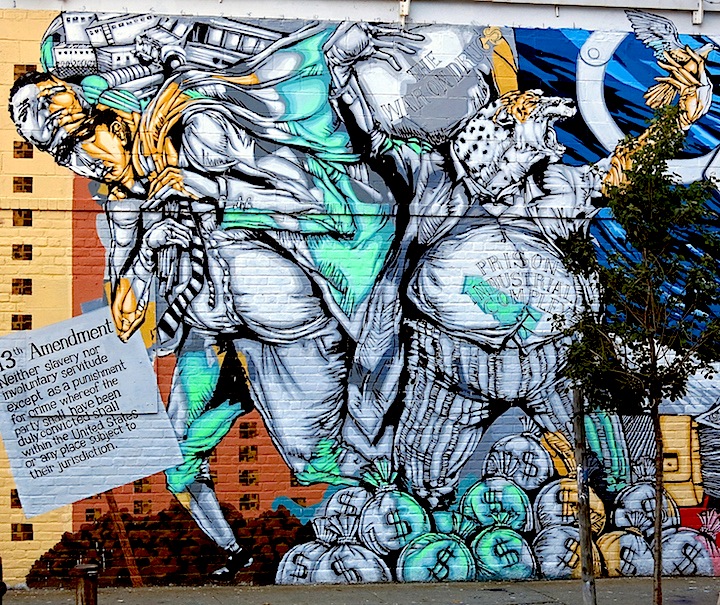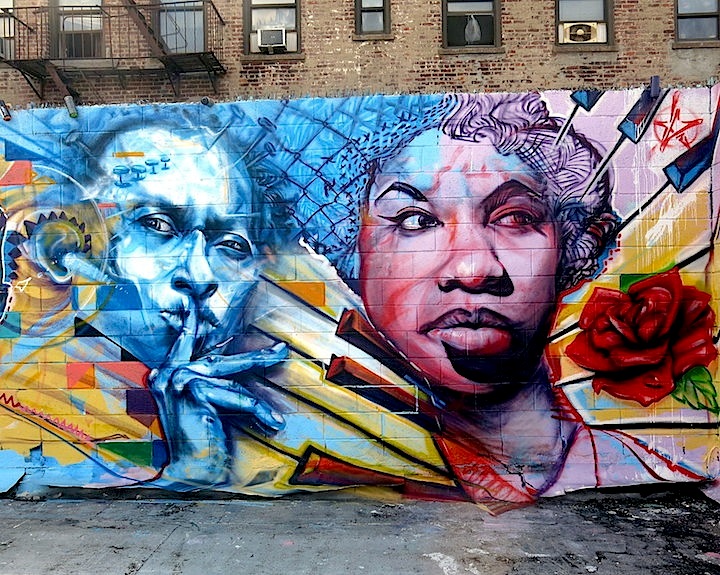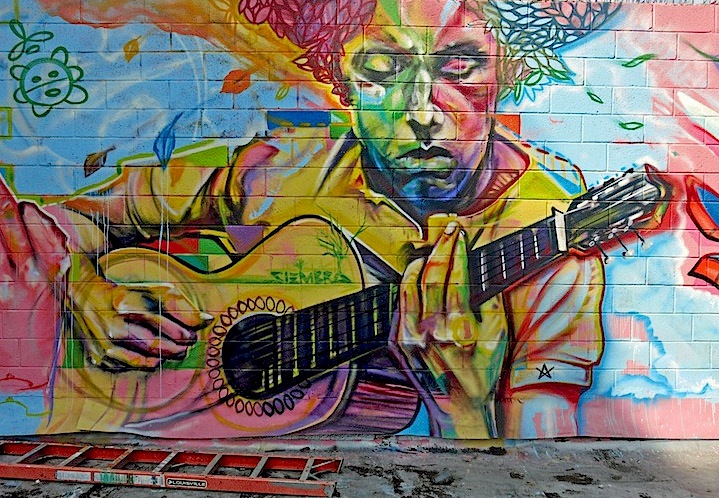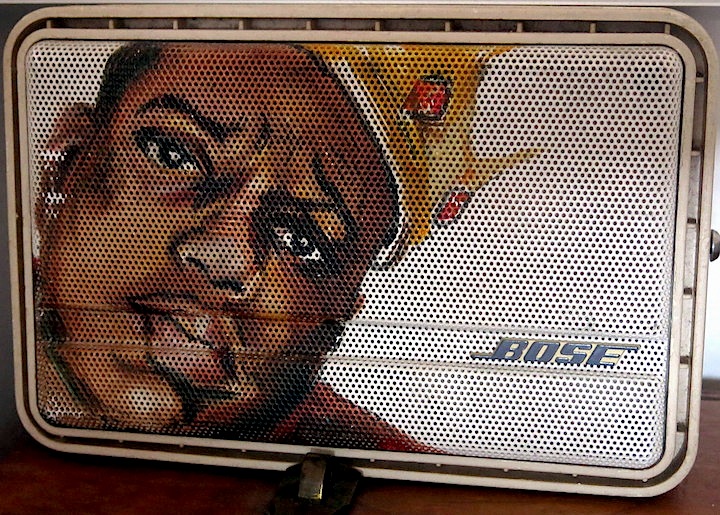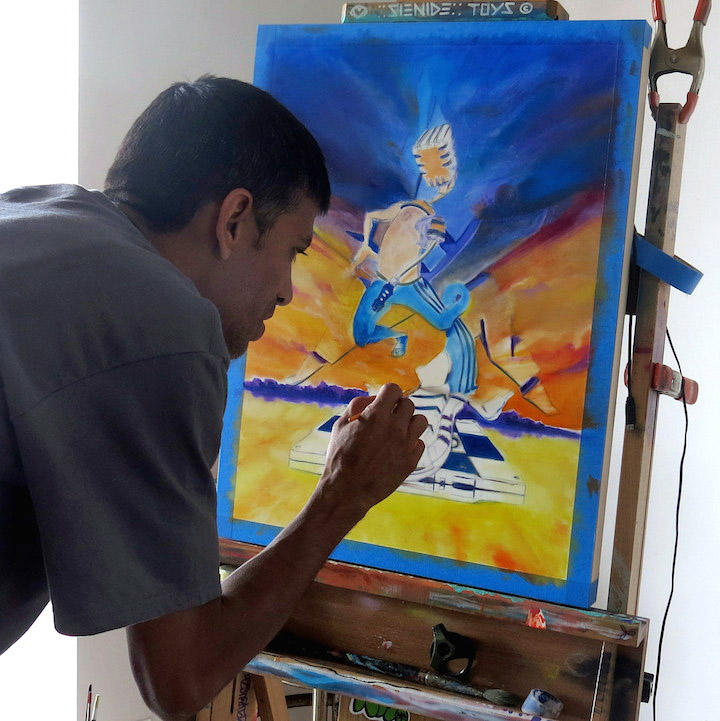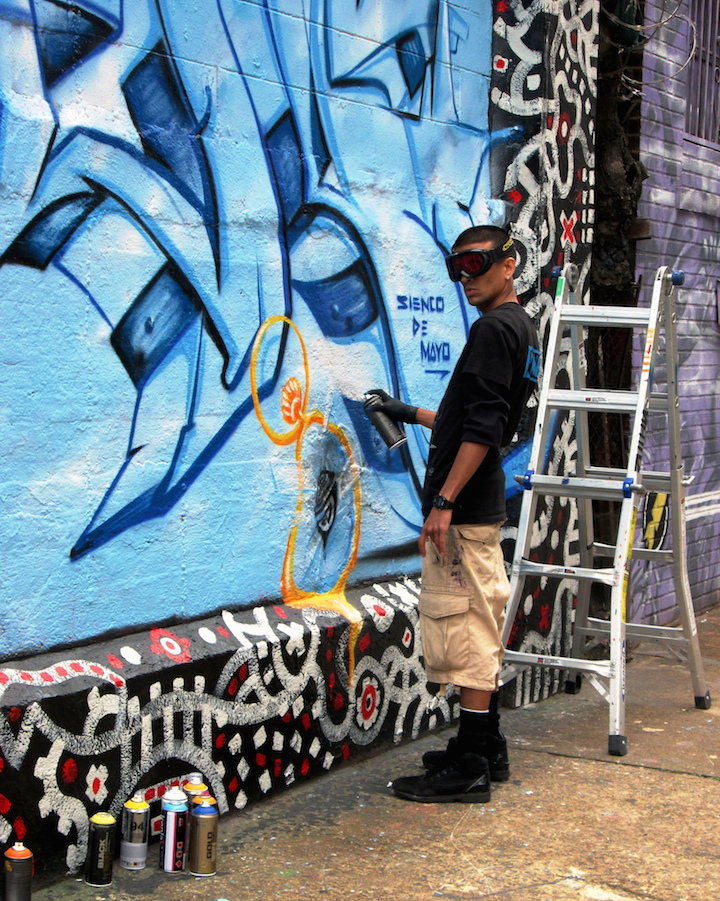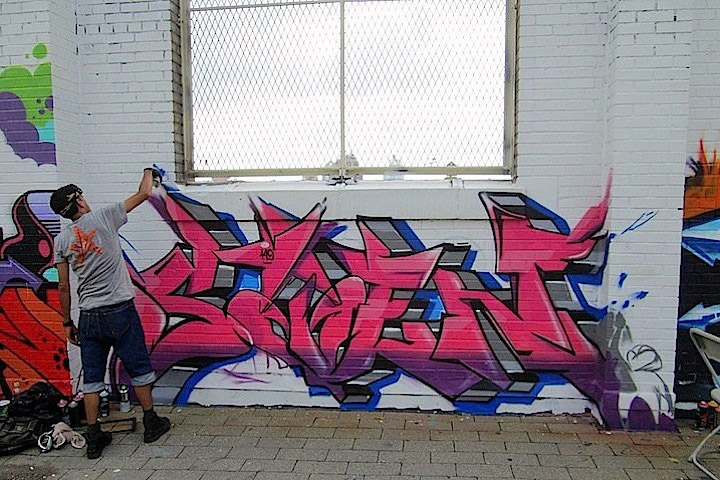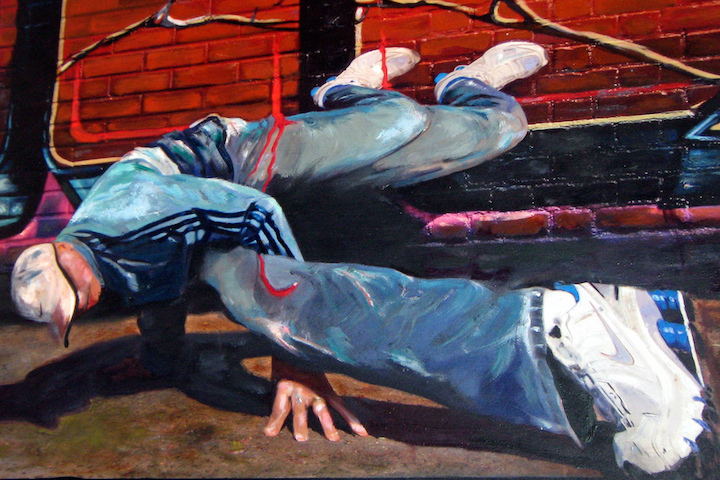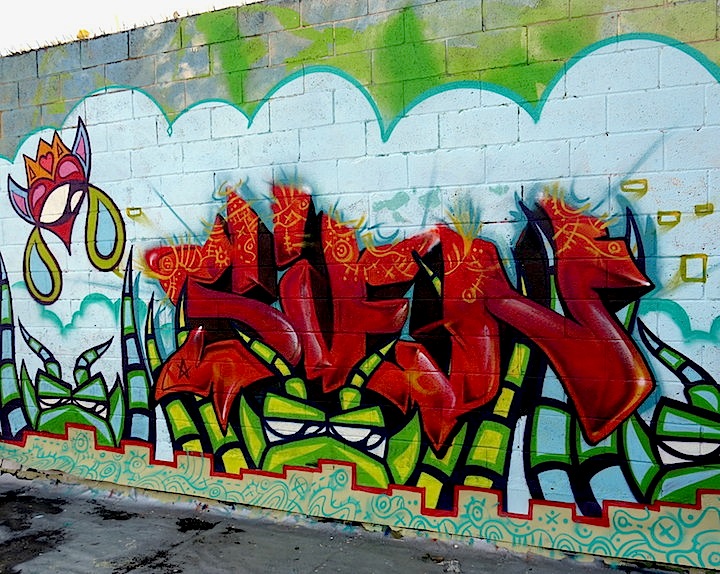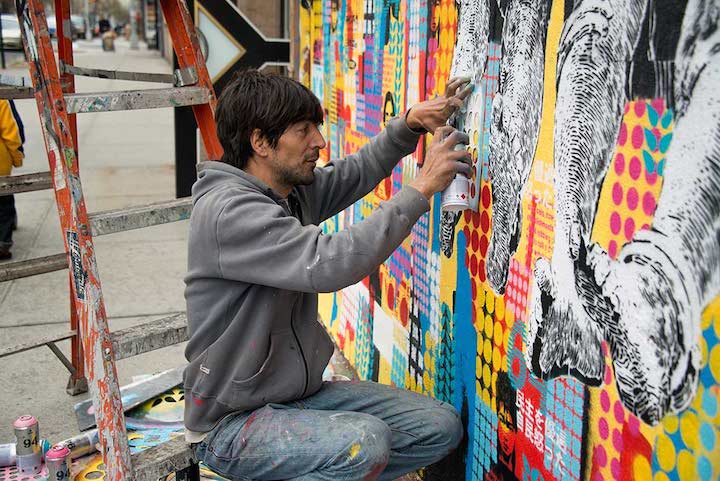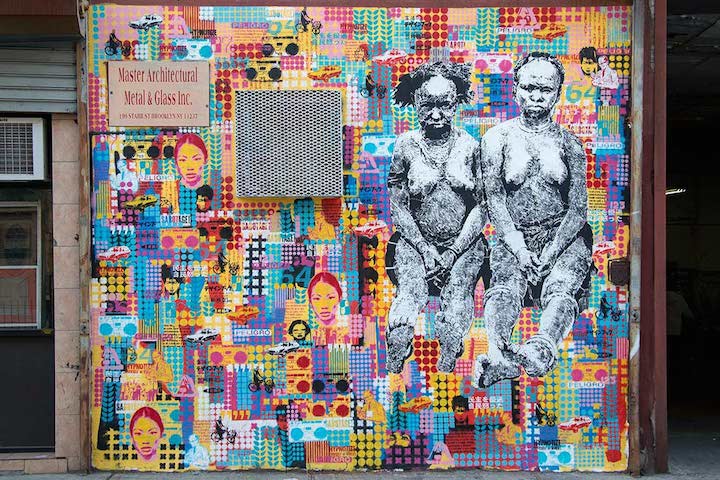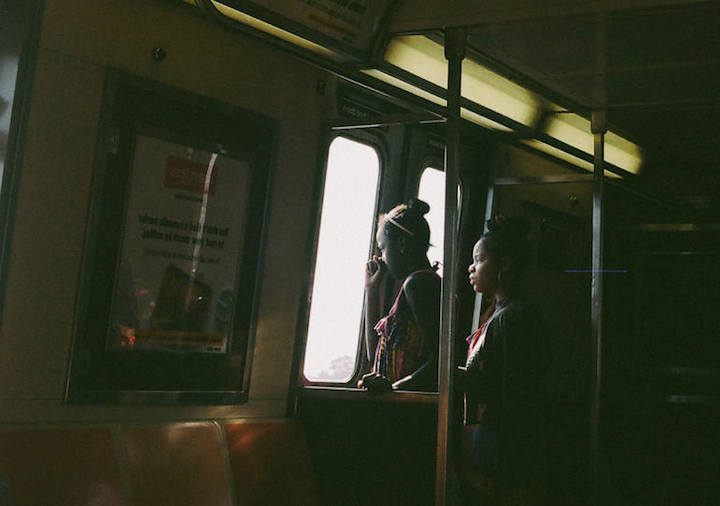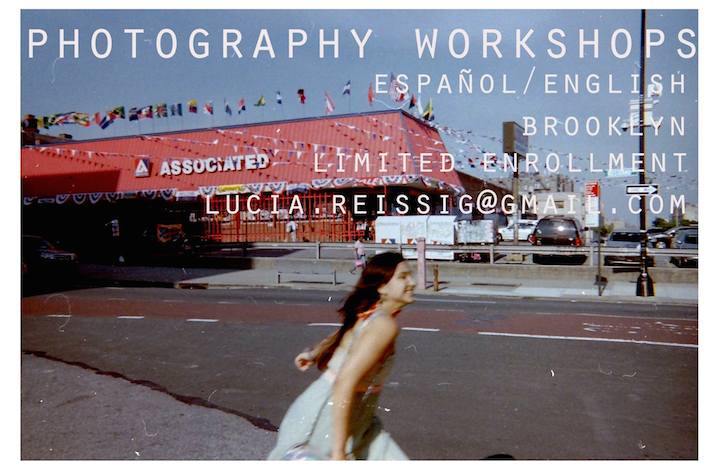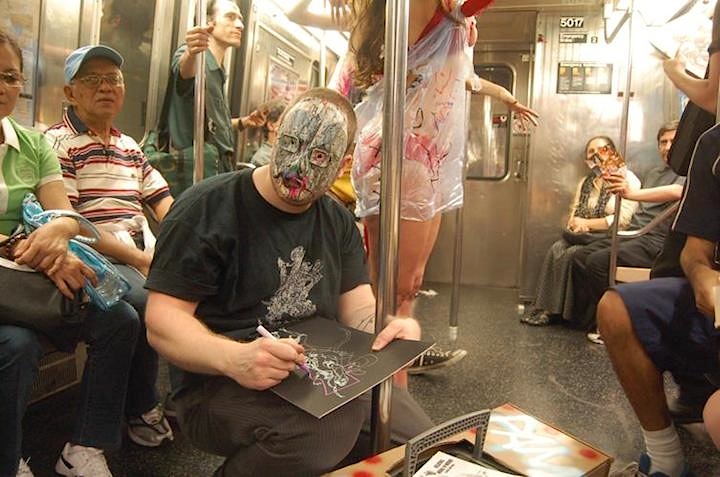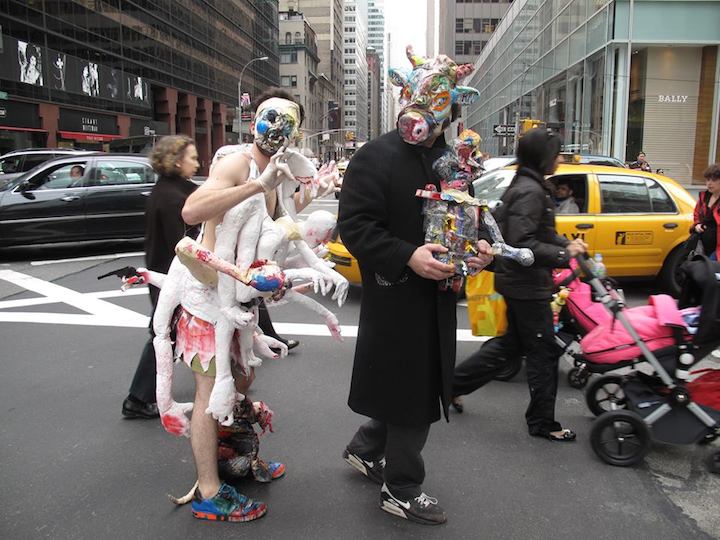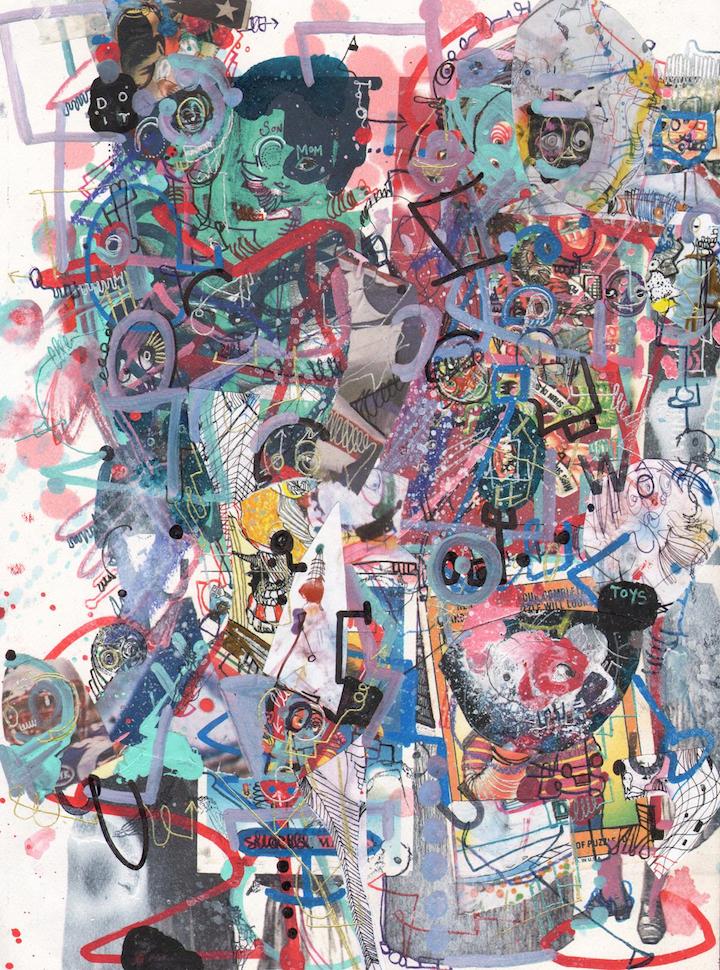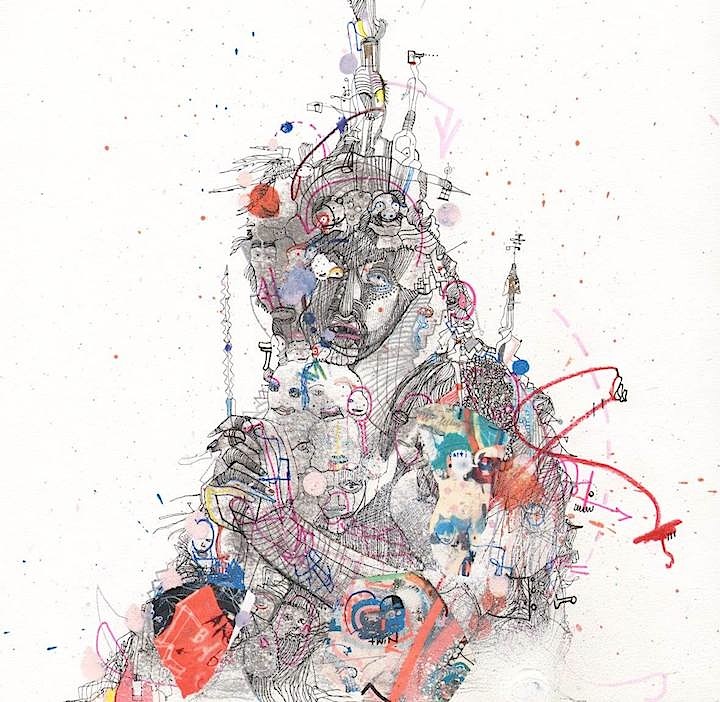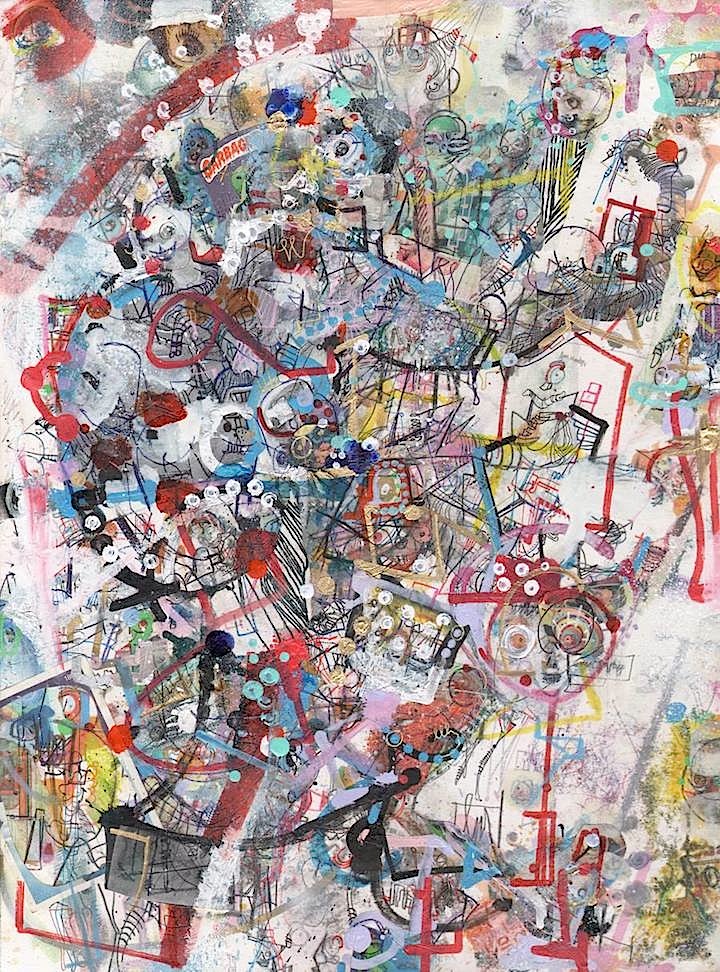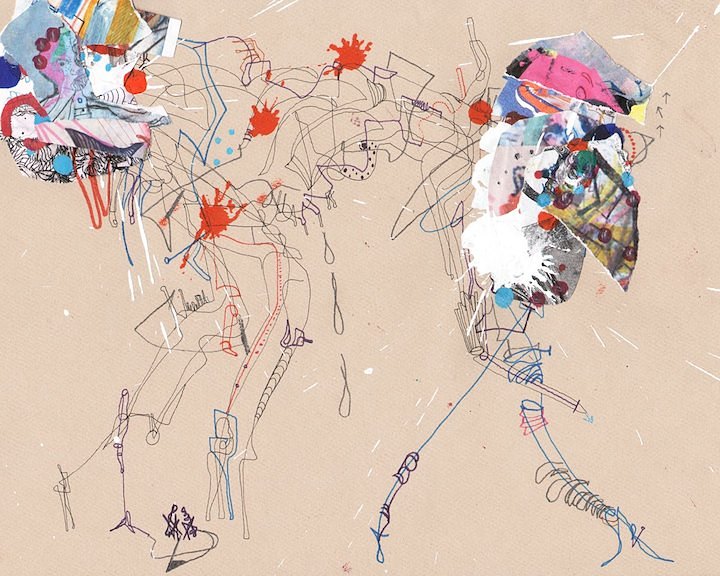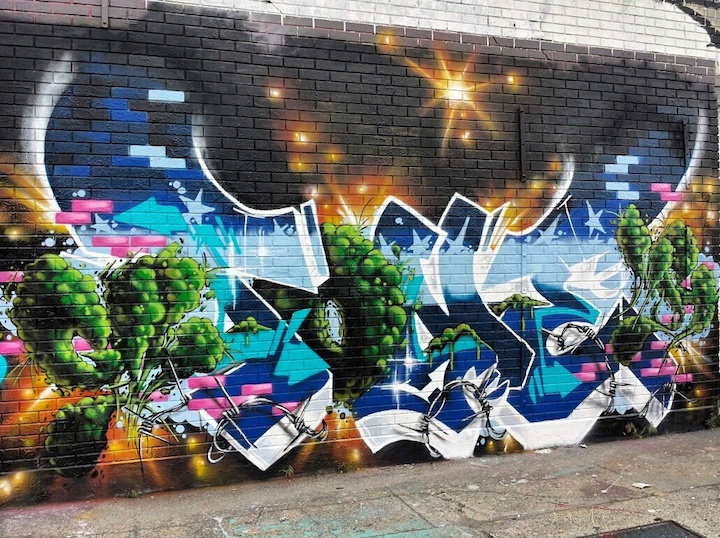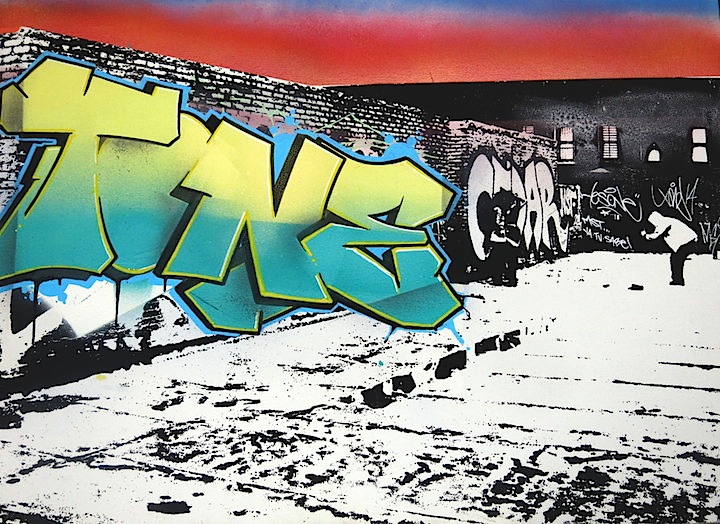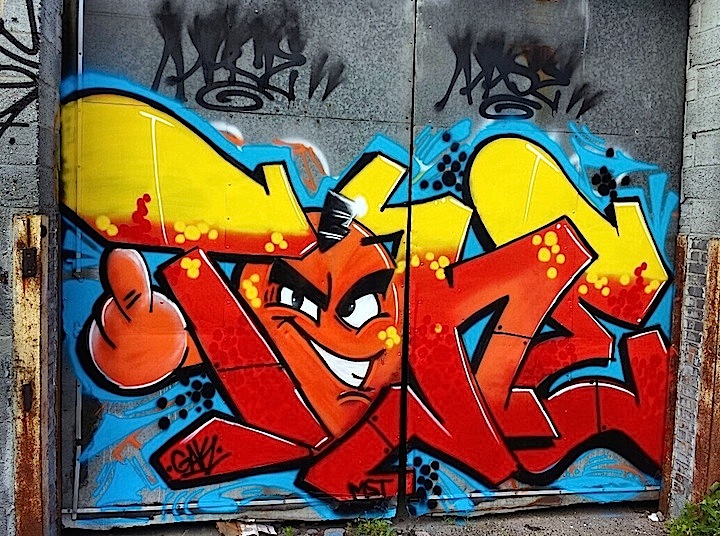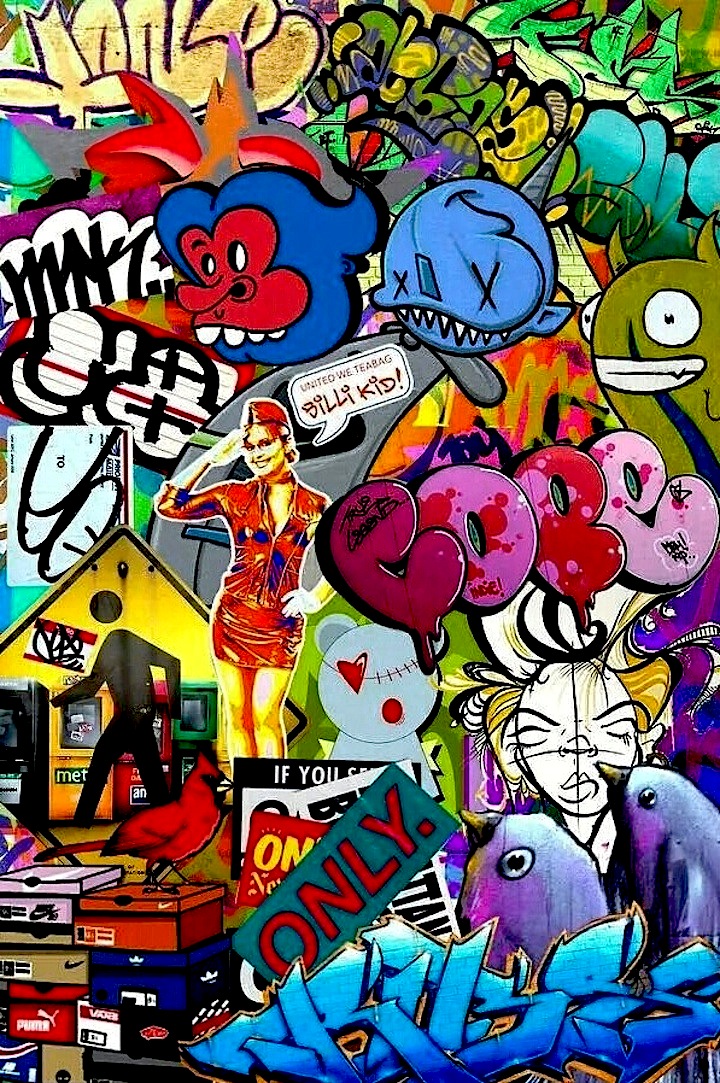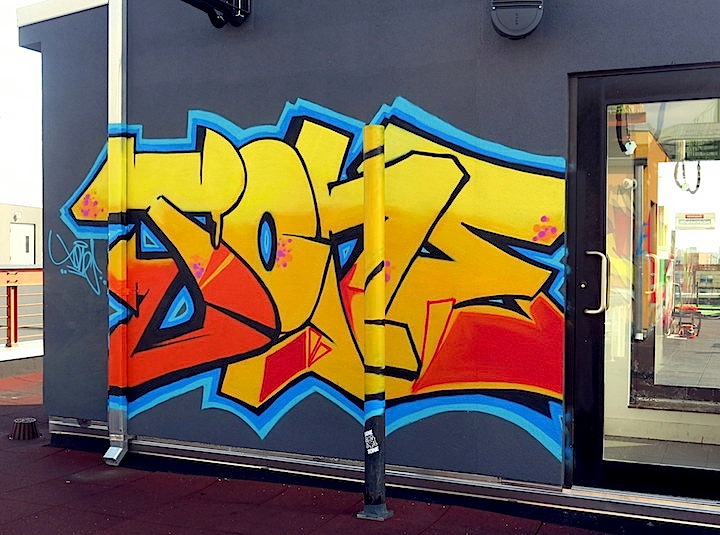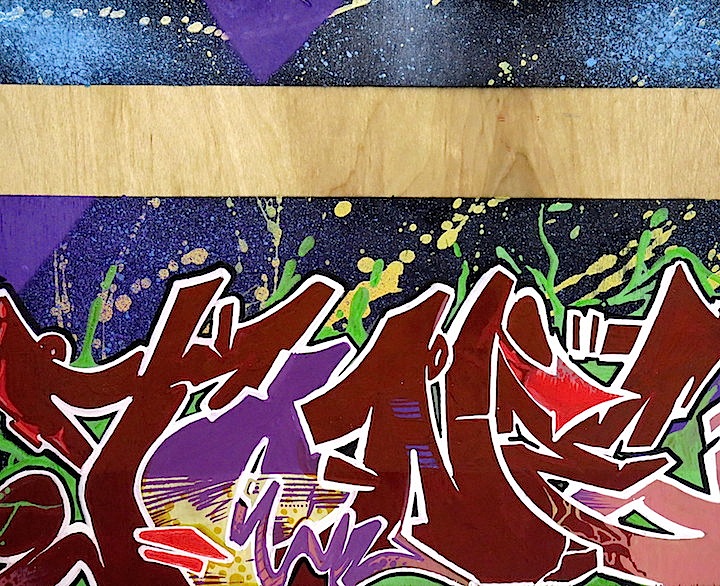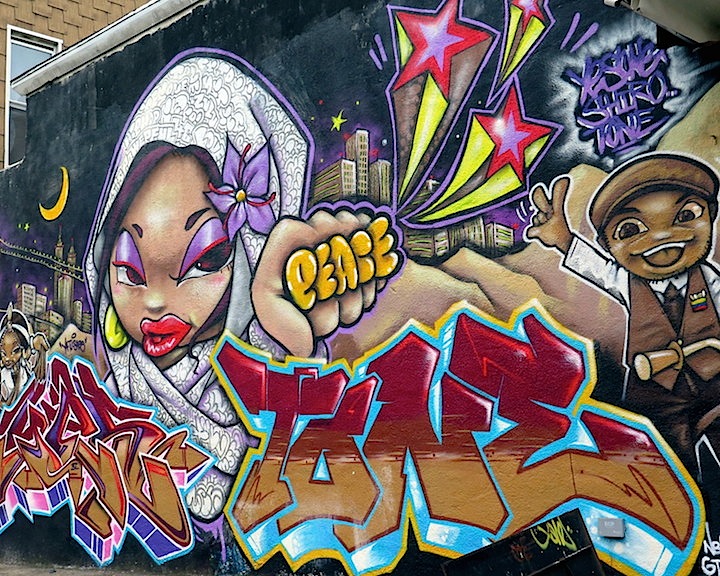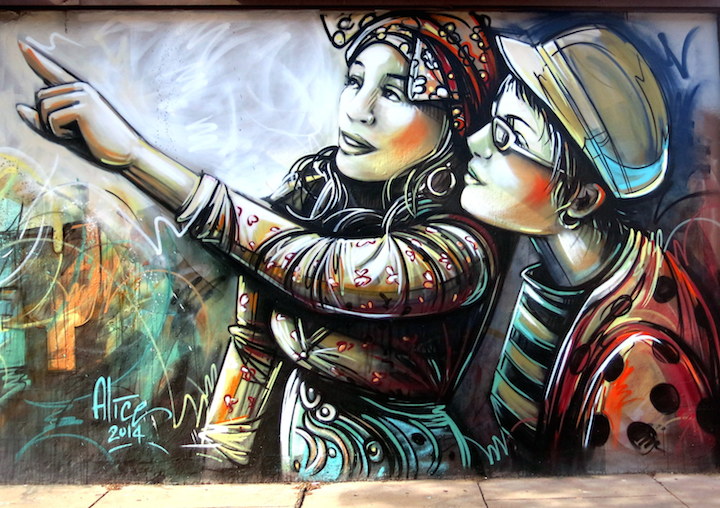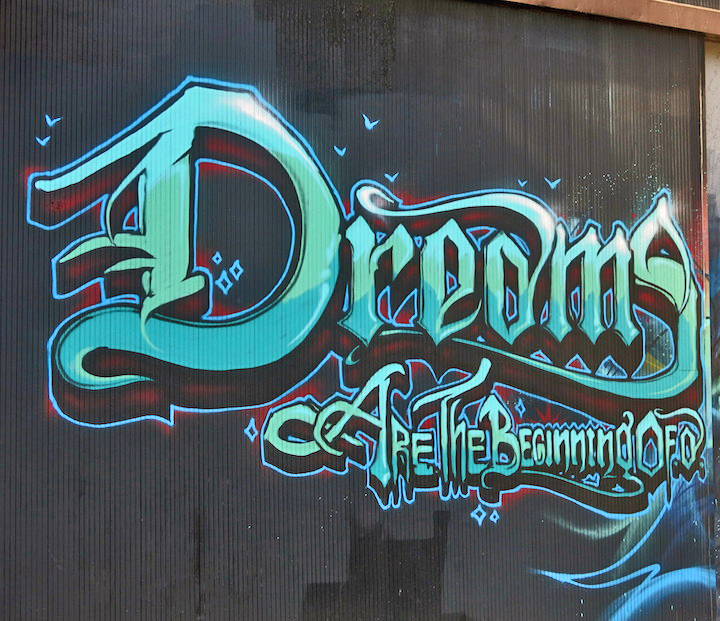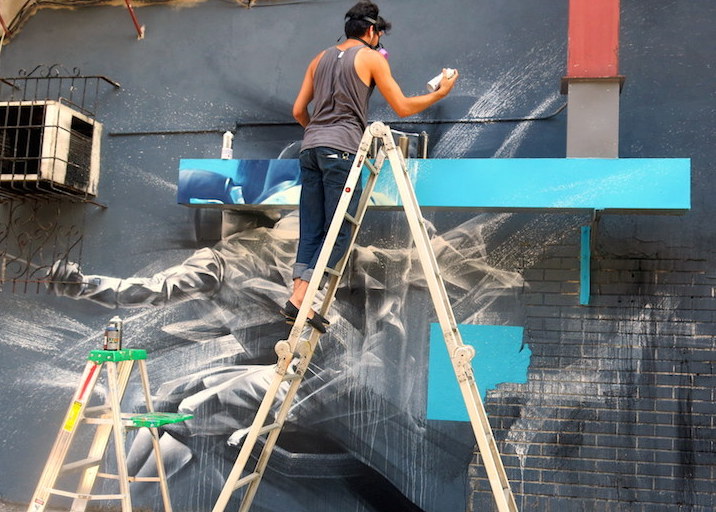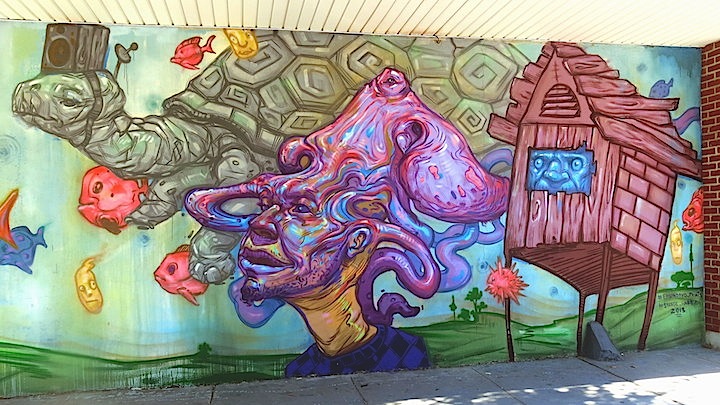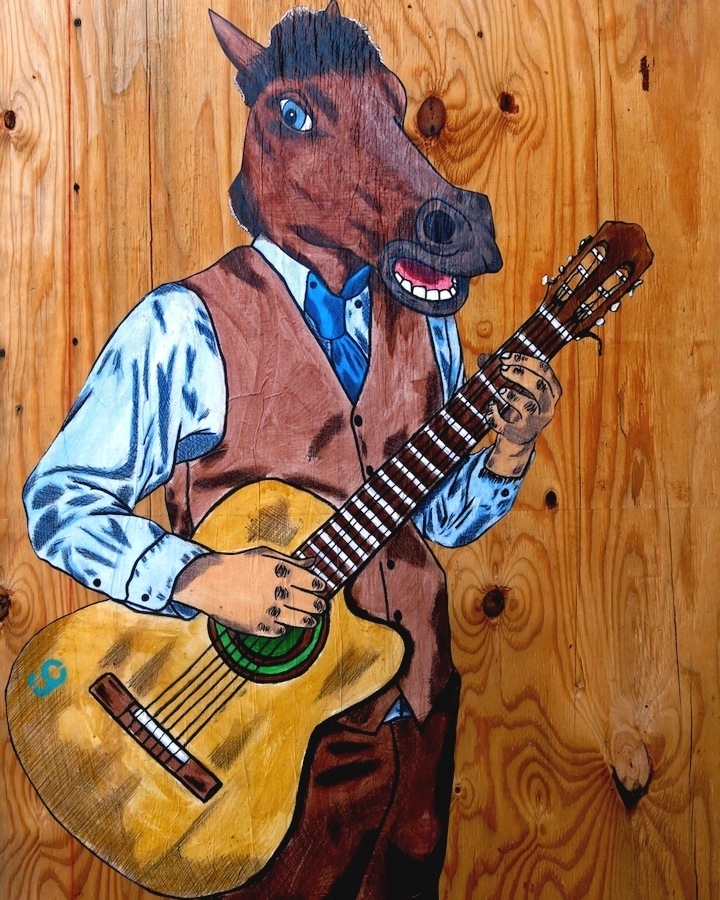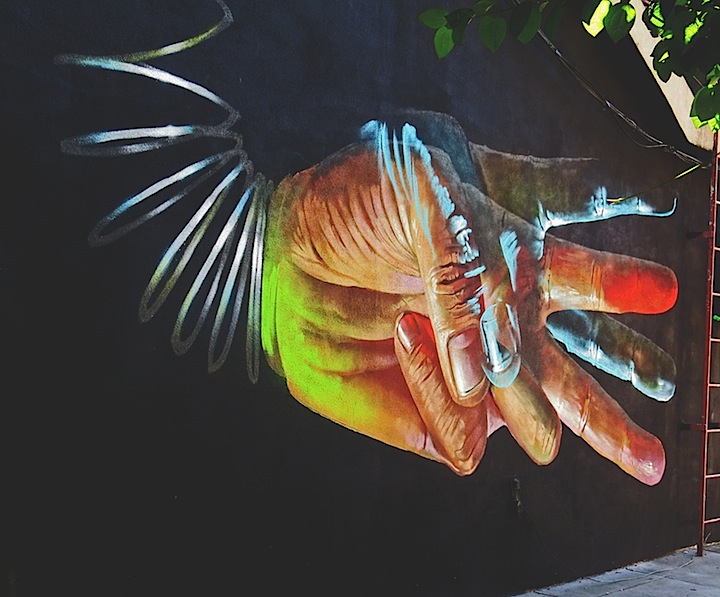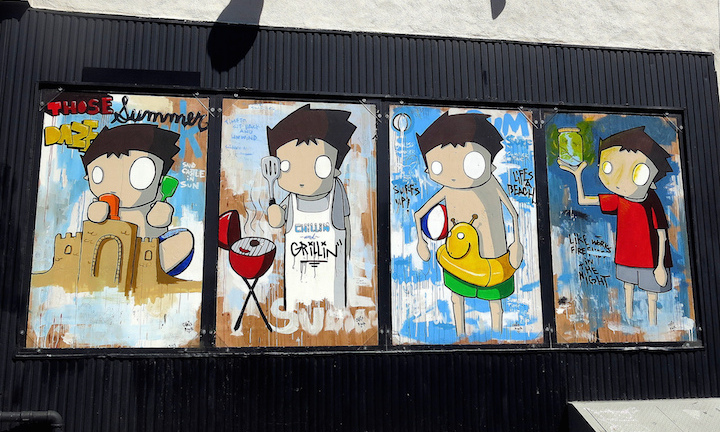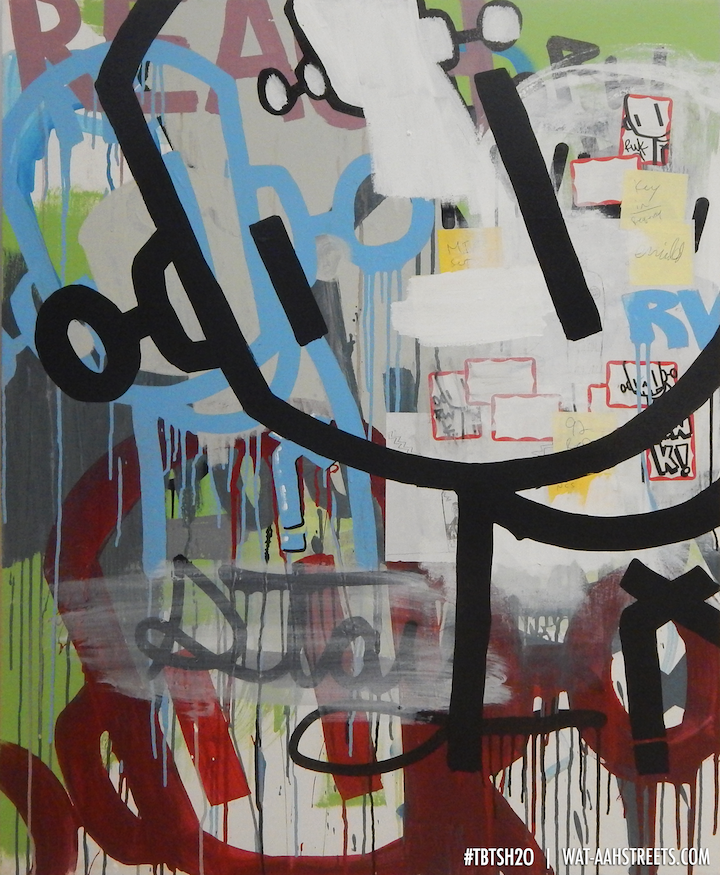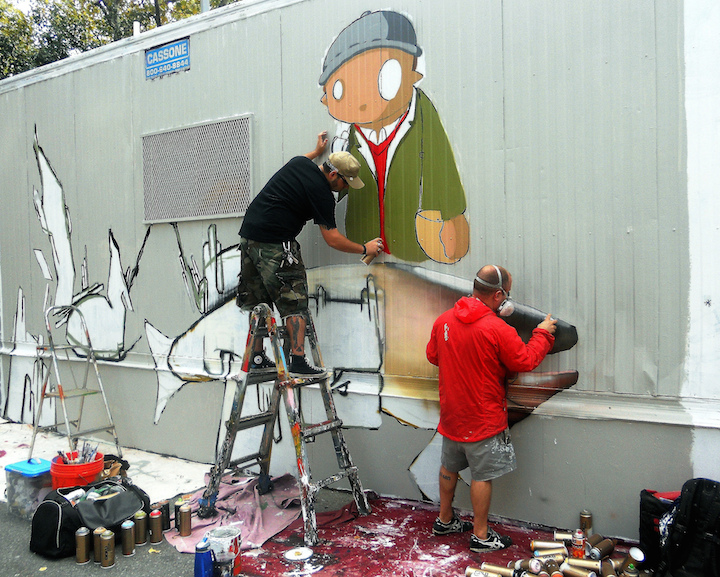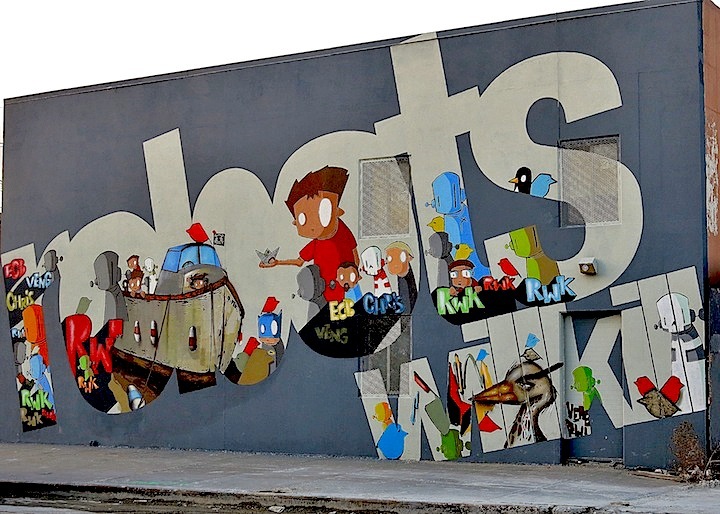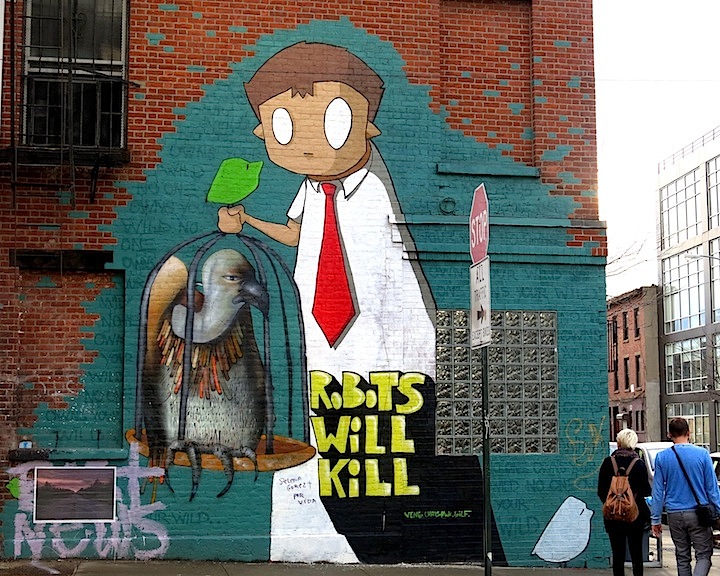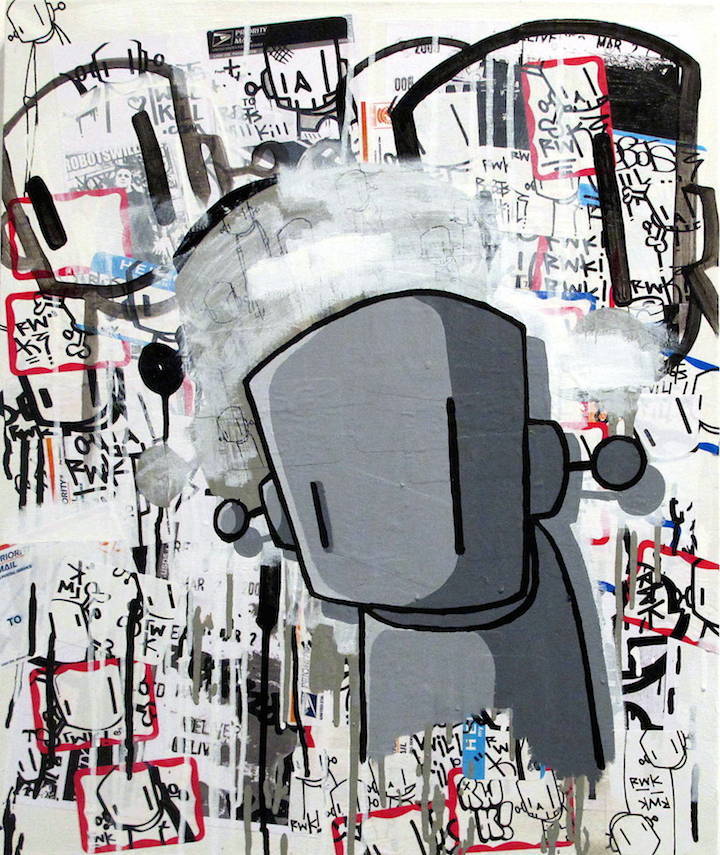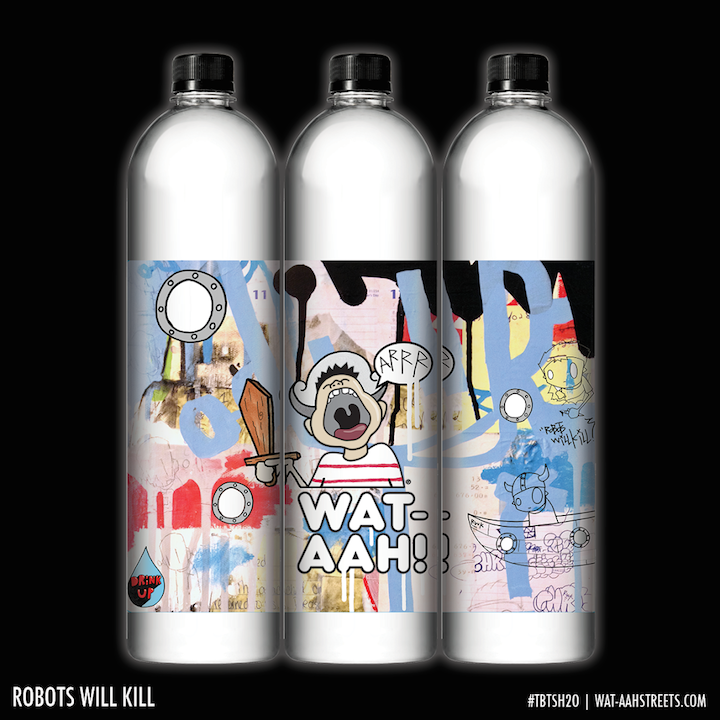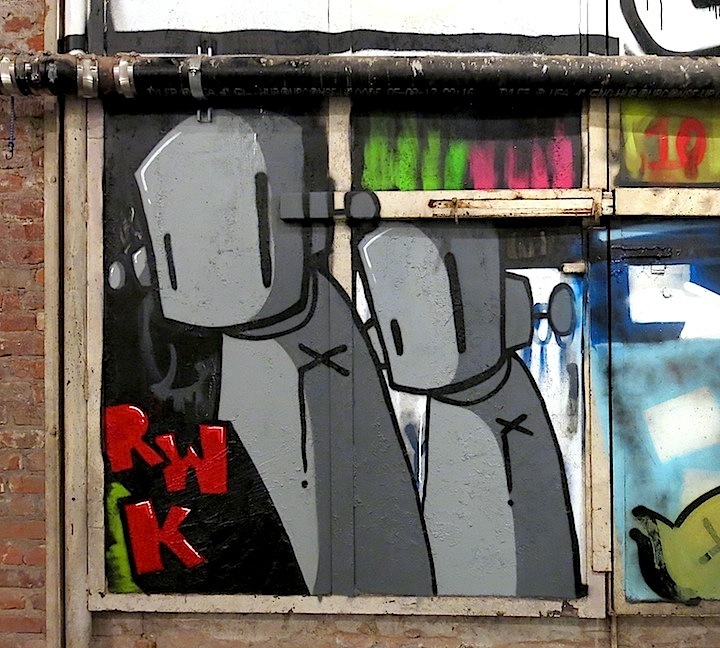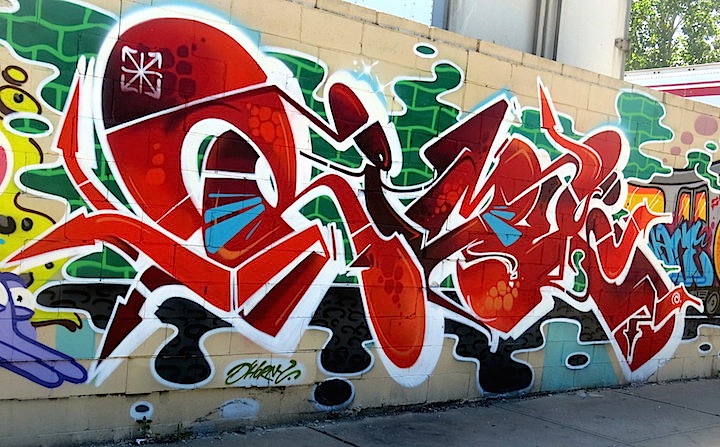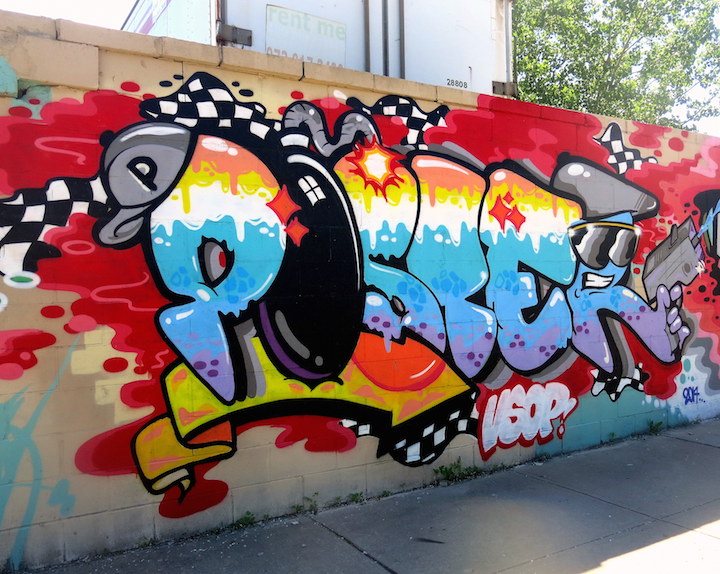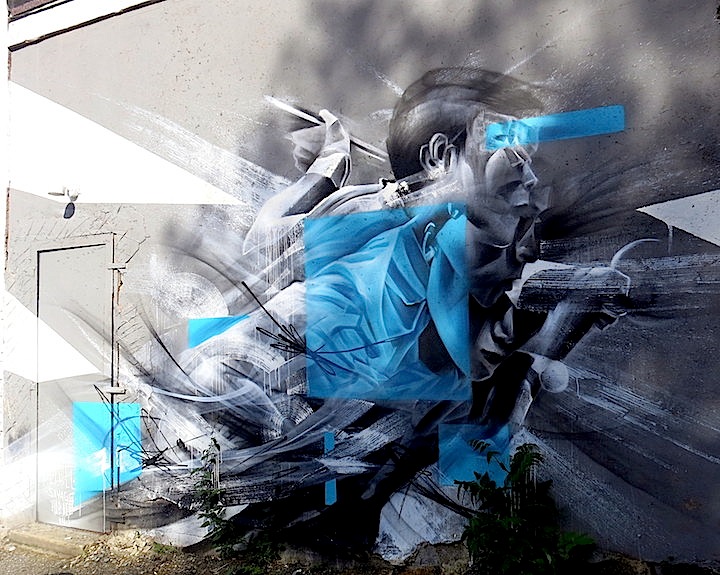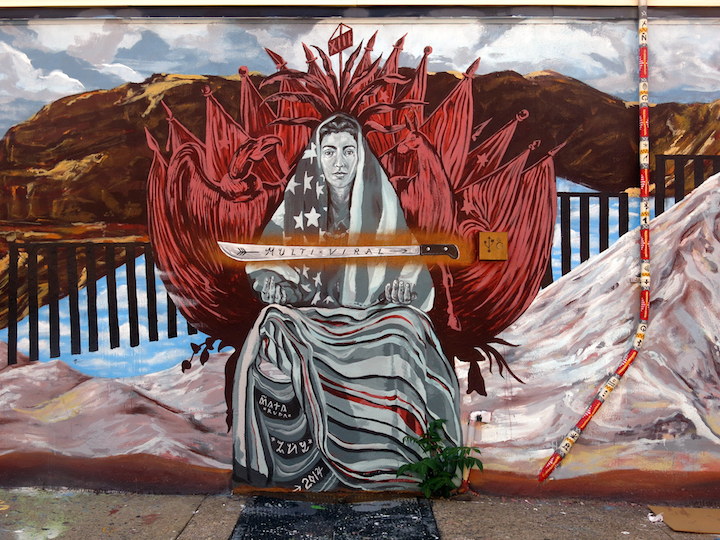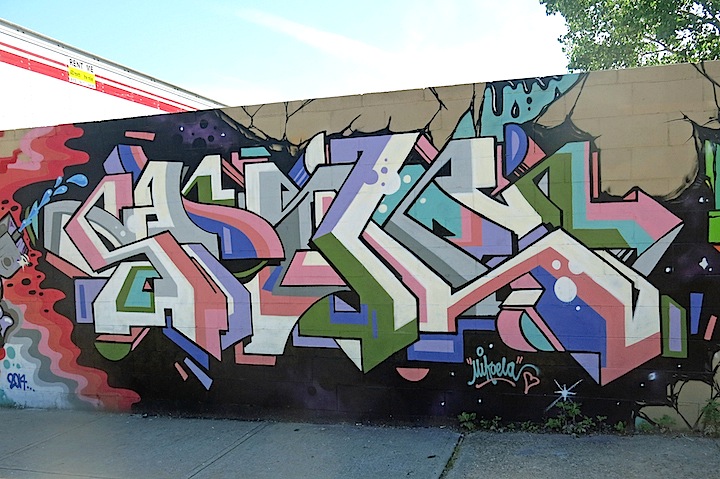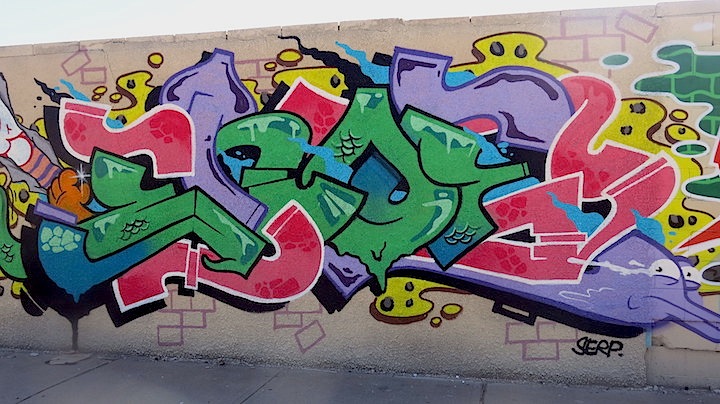With a strong presence on the streets throughout Manhattan, Brooklyn, the Bronx and Queens, Joseph Meloy’s distinctive aesthetic has also made its way into a range of galleries and alternative spaces. Opening this evening at Galerie Protégé at 197 Ninth Avenue in Chelsea is The Playground of the Fantastical!, an intriguing selection of Meloy’s recent works on an array of surfaces. I stopped by the exhibit yesterday and also had the opportunity to speak to Joseph.
You have quite a presence on the streets. What inspired you to get your vision up on public spaces?
As a kid, I was obsessed with Cost and Revs. Their presence on the streets fascinated me. I used to stay up until two in the morning to watch their public access show. Undoubtedly, they were an inspiration.
When did you first get up and where?
When I was a student at the Bronx High School of Science, I was into drawing squirrels – and I began hanging posters of them all over my school. But 2006 is when I started getting wheat pastes up on the streets. They were largely random digital creations at the time.
What about galleries? The Playground of the Fantastical is your second exhibit at Galerie Protégé. When did you first begin showing in galleries?
My first exhibit was in a pop-up space back in 2011. Since, I’ve shown in quite a few spaces – from alternative ones to more traditional gallery settings. Among these are — in addition to Galerie Protégé — Le Salon d’ Art, Succulent Studios, and the Fountain Art Fair.
How do you feel about the movement of graffiti and street art into galleries?
It’s a natural and inevitable progression. What’s happening now is a resurgence of what was going down 30 years ago.
Do you have a formal arts education?
No. I majored in Spanish in college. I’m self-taught.
What inspires you these days?
Introspection. My inspiration is internal.
Has your aesthetic been influenced by any particular cultures?
No one particular culture. But there are obvious influences from ancient hieroglyphics and palaeographics.
What is your ideal working environment?
Any place with enough room for me to create without having to worry about messing it up.
Are there any particular artists whose aesthetics have inspired or influenced you?
Michael Alan – a friend who is a wonderful artist and inspiration. And I suppose that — like so many others — I’ve been inspired and influenced by Keith Haring and Basquiat.
Would you rather work alone or collaborate with other artists?
I like the concept of collaboration, but it’s easier for me to work alone. I’ve successfully collaborated with Michael Alan and Fumero, and I’m looking forward to collaborating with Col, Wallnuts.
We identify you with the term Vandal Expressionism – that you coined. Can you tell us something about that? When did it originate? What does it mean?
I came up with it in the summer of 2010. It seemed to best represent what I do and who I am. It signifies how I repurposed the visual language of graffiti and street art. And it’s quite universal, as it translates well into other languages.
What about the title of this show – the Playground of the Fantastical?
It was actually coined by the gallery’s director, Robert Dimin, as it reflects both my work and that of the Brazilian artist, Maria Lynch, who is exhibiting alongside me. The title is perfect as it suggests both a childlike innocence and a whimsical sense of adventure.
What do you see as the role of the artist in society?
The artist has many roles – to reflect on society, to inspire…to amuse…and to make people think.
I can certainly see that in your work!
Note: The Playground of the Fantastical opens tonight, Thursday, from 6-8pm at 197 Ninth Avenue and 22nd Street and continues through October 3rd. Tomorrow evening Joseph Meloy will be exhibiting along with City Kitty and others in Downtown Denim at the City Life Gallery in Jersey City.
Interview conducted and edited by Lois Stavsky; photos 1 and 4 by Dani Reyes Mozeson; 2 and 3 by Lois Stavsky and 5 by Tara Murray.
{ 1 comment }

